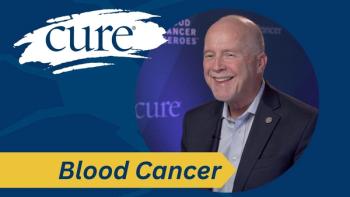
- CURE® Summer 2022
Patients With Metastatic Breast Cancer Should Be in the Driver's Seat for Their Treatment Planning
In CURE®’s “Speaking Out” video series, on behalf of Living Beyond Breast Cancer, Dr. Nancy Lin discusses treatment planning for brain metastases in breast cancer and how patients can take part in driving their care.
For treatment sequencing for brain metastases in breast cancer, a multidisciplinary team of medical oncologists, radiation oncologists, surgical oncologists and neuro-oncologists is necessary in driving one’s care along the way.
As part of its “Speaking Out” video series, CURE® spoke with Dr. Nancy Lin of Dana-Farber Cancer Institute in Boston about treatment sequencing for breast cancer brain metastases and how the multidisciplinary approach plays a role.
Q:How common are brain metastases in breast cancer?
A:If we look at people who have early- stage breast cancer, brain metastasesare not a common site of initial recurrence. So among patients with early-stage breast cancer, less than 2% will develop brain metastases as their first metastatic location. It’s a little bit higher in patients who have stage 3 or inflammatory breast cancer, more like 8% or 10%.
If we look at patients who have metastatic breast cancer, the risk over time is much higher in some groups of patients.
So in patients who have HER2-positive metastatic breast cancer, as their first location of metastasis, the brain is not very common. Over time, about half of patients will develop cancer in the brain. And similarly, if we look
at patients with triple-negative breast cancer, over time between a quarter to 40% will develop cancer in the brain. For patients who have estrogen receptor-positive versus -negative breast cancers, it’s much less common; it’s about 10% to 15% over someone’s lifetime.
Q: What are the most common treatments for brain metastases, particularly in breast cancer?
A: For patients with brain metastases, there are three major types of treatments: surgery, radiation therapy and some sort of systemic treatment, whether it’s chemotherapy or targeted therapy. When we look at patients who have a new diagnosis or recurrent diagnosis of brain metastases, we’re trying to see whether each of those options is the right option at that one moment in time.
Q: How does the multidisciplinary approach play a role in treating brain metastases?
A:It’s really critical. Taking the analogy from early-stage breast cancer, where you get optimal care, we have people see a breast surgeon, a radiation oncologist and a medical oncologist.
For patients with brain metastases, we would very frequently involve the radiation oncologist and then sometimes would involve a neurosurgeon, if there’s a potential for surgery to remove the cancer in the brain. (Neuro-oncologists) can be very helpful in things like managing seizures, understanding symptoms and where (metastases) might localize to. We also collaborate very carefully with neuro-oncology for patients with leptomeningeal disease. And then the medical oncologist provides the systemic therapy or recommendation.
So all of these specialties are very important, and especially because sometimes we choose one over another. Sometimes we choose to combine different types of modalities of treatments. And so you really need everybody at the table to try to understand what’s the best course.
Q: What is your advice on how patients can communicate with their multidisciplinary care team?
A: So a couple of key points. One is that it’s important as a patient to really feel like you know who is driving your care from a medical standpoint. Obviously, you as a patient should ultimately make the decisions about what you think makes sense and to go forward with. But you want to know, because if there are multiple people involved in your care, where the buck stops, and you want to know who’s coordinating your care.
The other is, it’s important to communicate your learning style, your communication style, your preferences. ... People have very different styles. And it’s OK to have different styles. It’s important to communicate what your style is to your doctor.
And the last thing is don’t be afraid to ask questions. Don’t be afraid
to ask for a second opinion if you think that that might be helpful.
My patients ask for second opinions. There’s no ego here. We know patients want to have the best treatment options offered to them, and we want that for our patients, too.
For more news on cancer updates, research and education, don’t forget to
Articles in this issue
over 3 years ago
Using Effective Cancer Therapies Earlier — Does It Always Work?over 3 years ago
How Patients With Cancer Can Best Care For Their Chemo Portover 3 years ago
Uncovering New Ways to Make Cancer Surgery Saferover 3 years ago
Teaching Others Through Cancer Advocacy



